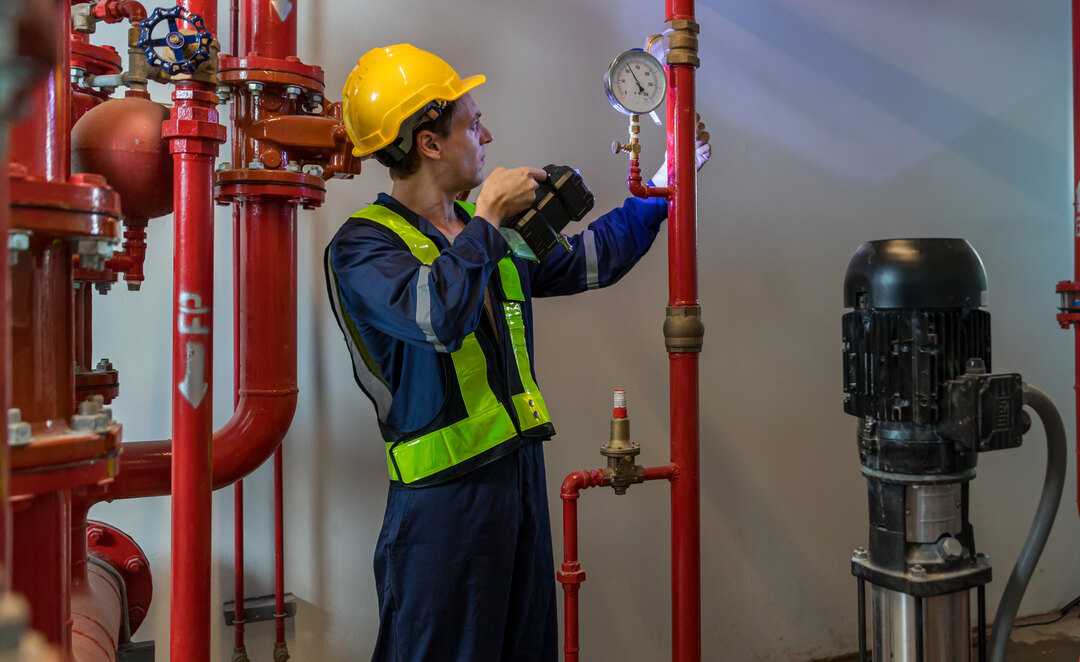Complete Information on Metron Fire…
We know that fire pumps are the backbone of every residential or commercial fire protection system, but their successful operation…
How important are fire pumps for your protection against fire? Well, important enough to immediately kick into action and become a line of defense whenever there is an emergency!
Now, it can be the worst nightmare for anyone to get caught in such a situation, knowing that their pump is not ready for the task
So, if you do not want to put your life and property at stake, make sure the fire pumps in your premises undergo regular testing as outlined in NFPA 25, and for easy and proper testing, you should have the best equipment in your hands
One of the most common methods of testing is the use of a fire pump test header arrangement. This is the equipment that lets a large quality of water flow through multiple hoses
You will find them in the form of a manifold with hose valves to which one needs to attach the hose pipes while testing. Let us explore their importance and requirements in detail.

Performing an annual flow test is necessary to check the condition and fitness of fire pumps in your facility. This test helps you measure the pump’s water pressure and volume
In addition, you will become aware of any issues with the water supply as well, such as blockages or closed valves.
Besides, there are multiple testing arrangements you can choose from according to the requirement of your fire protection system, availability of compatible equipment, and manpower expertise.
The common arrangement uses a test header, usually mounted on the exterior of the building, to which hoses and nozzles are connected. The test is performed by discharging water into the atmosphere with appropriate pressure and flow readings taken.
Here, the header is fed from the pipe originating from the fire pump discharge.
NFPA 25 requires the test to be conducted in three conditions-
This is done by qualified personnel who knows the ins and outs of the fire pump and have the proper equipment
The no-flow test requires no water through the header, whereas 100% flow is done by flowing 100% of the fire pump-rated flow through the header and enough test valves, and 150% flow includes flowing 150% of the fire pump rated flow through the fire pump test header and more test valves.
As test headers are the crucial part of annual flow testing, you should pay attention to their build while choosing and installing them
The other method of fire pump testing using a fire pump test header is called closed-loop metering, in which a metering device or flow meter is used to measure the flow
As the name suggests, the arrangement is devised in the form of a loop in such a way that the metering device remains on the pipe loop, and the discharge water from the pump is taken back to the water supply tank
In another arrangement, it can also be circulated back to the suction line that feeds the fire pump
It appears easy and quick, requiring less manpower and expertise. However, for such arrangements, NFPA 20 requires alternate means of measuring flow, like using a test header. The fire pump test header can lie in series or downstream of the flow meter
Locating it the right way, as outlined by NFPA 20, ensures an accurate assessment of the fire pump’s flow
While a closed-loop arrangement appears to be the best way to test fire pumps, it does not tell you much about the water supply. However, during the flow test, you should be able to check the complete system as a whole, not just the fire pump.
So, we have concluded that it is better to use the Test Header arrangement for complete flow tests and use the closed-loop ones for interim tests.

When it comes to your protection, you want to have a prompt and reliable system in place to combat any disaster. And any negligence in the testing and maintenance of this equipment may result in an unexpected loss
So, be ready with the best in your hands! You already know the importance of test headers in the flow test. Well, there is more to it!
There are certain fire pump test header requirements you should be aware of
The test headers are best put on the exterior wall near the pump room. However, these may be capped to prevent theft in high-crime areas. This arrangement helps the testing company to easily connect hose lines that can be run safely to discharge locations like sewer drains
Okay, another thing, the header stays on the discharge side of the pump. The flow from here is generally measured by a pitot gauge or other flow-measuring device that one places in the flow stream.
The water measurement should be cataloged with care. The traditional way of measurement involves a pilot tube being placed in the water stream at a certain angle and a defined distance from the opening.
For manual operation, you will require an experienced person, and the hoses should be secured properly.
Apart from the guidelines stated above, it is also crucial for you to know that the dimensions of the pipe leading to the fire pump test header and the number of hose connections will depend on the pump size
Once the test is completed using approved devices and methods as per NFPA 25, the results are recorded. Now, a graphical representation is generated that is popular as a pump performance curve
There are many more mandatory procedures to be taken care of in between the above process and after that to ensure the good health of fire pumps in your facility
Make sure the weekly, monthly, and annual tests are performed following the regulations to keep your fire protection system up to date and ready in emergency situations.You can also read more on the flow testing procedure by National Fire Protection Association
Now that you know the importance of fire pump test headers in your fire-resistant system, you must be looking forward to investing in the ones meeting quality standards.
Which one are you going for? Would you like to know more about it?
Tell us in the comment section, and we will try to get back to you soon.

Firestad is the best exterior fire suppression system manufacturer in California. Our patent-pending high-pressure fire protection system protects your entire property, landscaping, and outbuildings and reduces wildfire damage by 96%. Firestad Blogs are written by experienced professionals and curated for an easy understanding for all our readers.
Recent Posts
We know that fire pumps are the backbone of every residential or commercial fire protection system, but their successful operation…
Your whole fire suppression system revolves around an efficient fire pump that performs at its optimum level whenever there is…
Copyright 2023 © All Right Reserved.